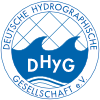Satellite-derived bathymetry – An effective surveying tool for shallow-water bathymetry mapping
Unlike other survey methods satellite-derived bathymetry (SDB) offers a remote mapping of shallow water zones. It is based on the concept of using the reflectance intensity of different wavelengths (colours) of the sunlight which is recorded by the satellite sensor. This information in combination with relevant databases and physical models determines the shallow water depth down to the light penetration depth. In the last decade, there has been an increasing interest of SDB methods and derived data. Various exercises have been done by academia and industry to validate and evaluate SDB data sets (REF). This awareness is based on two major developments: the recent availability of very high-resolution satellite data mapping the seafloor in sufficient detail and the design of robust and standardised algorithms and workflows. The demand of accessing bathymetric data for the shallow water zone, costs and the ability to map with ship and airborne sensors have also led to high interest in this effective surveying tool. The zone is still poorly surveyed for various locations worldwide (IHO 2016a). This article provides an overview of all aspects of SDB surveys from satellite sources, SDB workflows and methods to use cases.
Satellite-derived bathymetry – SDB | Remote sensing | Earth observation | Mapping depth


